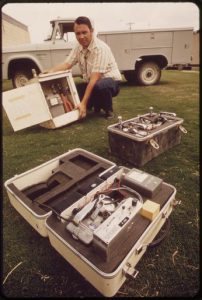AIR QUALITY MONITORS – DO YOU NEED ONE ?
AIR QUALITY MONITORS – WHAT ARE THEY ?
Indoor air quality monitors have improved significantly in the last few years. Advances in sensor and computing technologies have allowed the development of low cost air quality monitors that are portable and small in size and capable of being wirelessly connected to smart phones for real time monitoring and reporting the air quality in a room.
The explosion of new models has resulted in over-choice for the consumer. The recent models are designed to monitor some or all of the following air quality parameters.
- Carbon monoxide (CO)
- Carbon dioxide (CO2)
- Volatile organic compounds (VOC)s
- Particulate Matter (PM)
- Air turnover
- Humidity
- Temperature
Different Air Quality Monitors are designed for specific ambient conditions. All of the above parameters affect our perception of what is a comfortable home. However, not all of these parameters are equally important for a healthy environment.
WHAT THE SCIENTISTS TELL US
Most low cost monitors check the amount of CO2 .Scientists have established standards for safe levels of CO2 in an indoor environment. Since all humans exhale CO2 at the same predictable rate, the amount of measured CO2 in the building is used as an indirect measure of human bio-effluent concentration and building occupancy. Building code standards in the USA typically allow for a concentration of CO2 of 1000 ppm. So the amount of CO2 in the ambient air can be used as a way to control air quality. Some of the monitors can be connected to the home ventilation system so that when an unacceptable level of CO2 is reached the ventilation can start automatically.
This first step in monitoring ambient air is good, but it is not sufficient. Scientists have determined that small particulates, PM2.5 (smaller than 2.5 microns) are the most harmful to human health. These particulates can easily penetrate into our lungs and travel into our blood system. They can also transport toxic chemicals. Ensuring a healthy environment requires that we eliminate the PM2.5 particulates from the ambient air. So we should select an Indoor Air Quality Monitor that as a minimum allows us to monitor CO2, PM2.5 particulates and VOCs. (The VOCs are ultrafine particles, smaller than 0.1µm, and included therefore with the PM2.5)
The other parameters are of interest and important if we want to optimize comfort, but are not critical to our health.
YOUR CHOICES
Basic Models
These models give you a binary indication of air quality. Either Good or Bad. This indication could be in the form of a digital display or a color code, such as Blue for good, Orange for bad. It is a simple display of air quality but it is not a quantitative measure of the degree of pollution that is present. This type of Air Quality Monitor does not provide any details on the type of pollutant, nor what action should be taken by the user to correct the problem.
Models with Advanced Features
In addition to providing a binary status of the air quality conditions these models have additional features that allow you to find details. Visualization is most important .When combined with data logging, the users can see a chart or display showing the status of each parameter in near real time. The parameters displayed vary with different models.
It has been found that visualizing the problem allows the user to correlate the reading with an on-going activity, thus identifying what actions (cooking, cleaning, smoking, etc.) are causing the increase in indoor pollution.
Furthermore, awareness of the air quality associated with a specific activity promotes behavioral changes that will result in improved air quality in the future.
For those users interested in a better understanding of their pollution problem there are Indoor Air Quality Monitors that have wireless Wi-Fi connection that allows them to access web applications offered by the manufacturer. These apps allow the users to study the trend of measurements as they correlate to time of day, seasons, or other variables. These advanced models are intended for those users technical savvy, or professionals in the field of Building Science that study the interaction of Insulation, Air Conditioning, Ventilation and Air Quality.
Monitoring Systems
The models described above provide detailed information on indoor pollution. However, they do not help you to take action to correct an unhealthy air quality condition. The monitoring systems allow you to integrate the monitor with other home systems. This integration can be achieved through recipes or instructions available from ifttt.com (If This Then That).These instructions may allow you to connect a monitor to a smart thermostat, such as a Nest or an Ecobee thermostat, installed in an Air Conditioning unit or in an Air Purifier. If this connection is made, then the Air Quality Monitor can start automatically the Air Conditioning unit or the Air Purifier if the pollution level warrants it.Please note that not all monitors are designed to allow this integration.
A more advanced integration can be achieved using IoT (The Internet of Things) integration.This is a system being developed by many large companies,such as Microsoft and Amazon,which allows connectivity between all appliances or equipment used in home automation. I would suggest that this more advanced automation is best left to professional Home Systems specialists.

Conclusion
Improving Indoor Air Quality in our home is our individual responsibility.A suitable Air Quality Monitor can provide a good starting point.This is my recommendation on an Air Quality Monitor.
Choose wisely !

Carlos
carlos@improvingindoorairquality.com
Good evening Carlos,
I am not so technical so I have passed on your article to my better half. He is an Environmental Engineer but retired to the south of Spain in 2016. He finds these things very interesting. I showed him the Foobot Indoor Air Quality Monitor and he likes the idea. We are planning to build a new house, hopefully soon and there we would like to integrate all the newest technologies. Thank you for this information.
Regards, Taetske
I found your article to be thorough and well thought out. I had no idea that indoor air quality monitoring equipment had evolved to this point!
I learned a fair bit from your article and it’s something that I’ve always wondered myself. There is a lot of industrial development taking place in my neighborhood and it causes a lot of dust accumulation on my house floor. I’ve been wanting to know if it is affecting the air quality inside the house too.
An automatic home appliance seems like a good solution. They are compact and affordable. Will certainly look into this option.
I see that air quality in your home is very important for your family.You have a reason to be concerned.Health studies show that ultrafine particles,such as included in dust, are more likely to transfer from lungs to blood stream and therefore are the most dangerous.You might consider buying an air purifier just in case.You can review air purifiers at https://improvingindoorairquality.com/air-purifiers-who-needs-them